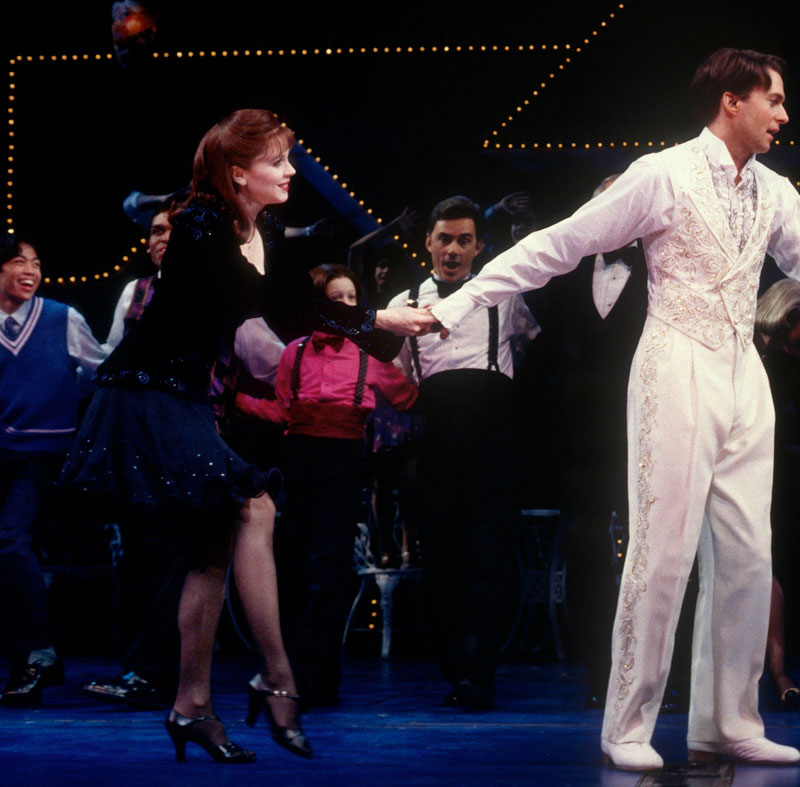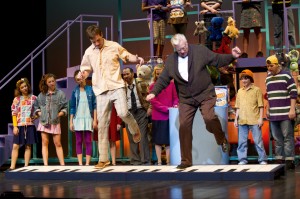Remembering Big
Movies have long been the inspiration for Broadway musicals. It is easy to say that this is a recent trend, but that simply is not so. Just as there have been many musicals that have taken their inspiration from plays, books, and historical events, there have been musicals that draw from cinema (from the 50’s on, anyway). In the 1990s, the trend toward adapting films for the musical stage seemed to gain even more traction, and by the turn of the century, everywhere you looked on Broadway you could find movies reimagined for the stage.
One of the movies that would make its way to Broadway during this time period was the 1988 film comedy Big. Directed by Penny Marshall and starring Tom Hanks as Josh, the story of a little boy who makes a wish to become a grownup and then has his wish granted, only to find difficulty in navigating an adult world, seemed like an ideal property for musicalization. In fact, one of the film’s most iconic moments was set in Manhattan toy store FAO Schwartz where Josh and toy manufacturing executive dance out “Heart and Soul” on a giant piano keyboard. Also, the opportunity to tell a musical story of a kid facing the harsh realities of adulthood before he was emotionally mature enough to handle it involved a unique perspective and the possibility for character reflection (a.k.a. a great jumping-off point for songs). Big almost begged to be a musical.
Daniel Jenkins and Crista Moore
The composing team of Richard Maltby, Jr. and David Shire, known for their Broadway score for the musical Baby, as well as a handful of Off-Broadway revues such as Starting Here, Starting Nowand Closer Than Everset out, with John Weidman (Pacific Overtures, Assassins) as book writer, to bring Big to the stage. Director Mike Ockrent (Me and My Girl, Crazy for You) would direct and Tony-winner Susan Stroman (Crazy For You) would choreograph. With a team of this caliber working toward the final product, Big was easily one of the more eagerly-anticipated musicals of the 1995-1996 season and rightfully so.
So why didn’t it work?
A couple of chief factors kept Big from being all that it might have been. For what seemed like a lot of great opportunities to sing, Maltby and Shire struggled to find them. Only a handful of their songs resonated and most of the score just didn’t seem to move the plot along (and this is a duo who wrote startlingly original, self-contained ditties for their revues). Some of the songs did work, which only made that ones that didn’t all that more glaringly obvious. Still, there was the poignant “Stop, Time” sung by Josh’s mom as she wonders where her little boy has gone to. “Stars, Stars, Stars”, a duet between Josh and his icy co-worker-turned-love-interest Susan was the perfect way to convey romance without it feeling age-inappropriate (remember, there is still a 12-year-old-boy inside that adult body). The song “Fun” which took place in the toy store on the piano keyboard was buoyant and …well…fun, but it never really captured that iconic moment from the film. This leads to the bigger problem with Big. The film and the Academy Award nominated performance by Tom Hanks were just too engrained in audience’s minds. It was going to take some really amazing songs, performances, and a clever transition of the Academy Award-nominated screenplay into a successful musical book for Big to be a hit. Despite doggedly-concerted efforts by the creative team, they never cracked the code that made it work in time for that Broadway opening.
Another part of the problem with Big was that the Broadway production just became overblown. Director Okrent seemed unable to keep this story manageably sized and seemed to take the show’s title as a personal challenge. Everything was too damn big! Susan Stroman, who has always made judicious choices on creating some of Broadway’s finest choreography of the last twenty-five or so years, just didn’t know how to handle Big. Her (over) use of a group of kids that came and went as a means to remind us of the “savor your youth” message that was central to the show was often cloying and distracting. At its heart, Bigis a very intimate story about one boy and four important people in his life: his mother, his best friend, his employer, and his co-worker. They all got lost in the Broadway production.
With a cast that included Daniel H. Jenkins, Crista Moore, Brett Tabisel, Barbara Walsh and John Cypher, Big opened at Broadway’s Shubert Theatre on April 28, 1996 where it received mostly critical pans. The show that seemed sure to be the hit of the season was eclipsed when the Tony nominations were announced by a little show called Rent and another one called Bring in ‘da Noise, Bring in ‘da Funk. Bigdid manage to receive a few nominations, including Best Book, Best Score, Best Choreography, Best Actress (Moore) and Best Featured Actor (Tabisel), but took no trophies home. Big was, however, revamped, rewritten and scaled down for its national tour. All of these changes seemed to help and the revised Big is now the official script licensed by Music Theatre International.
Mark Robinson is the author of the two-volume encyclopedia The World of Musicals, The Disney Song Encyclopedia, and The Encyclopedia of Television Theme Songs. His forthcoming book, Sitcommentary: The Television Comedies That Changed America,will hit the shelves in October, 2019. Hemaintains a theater and entertainment blog at markrobinsonwrites.com.











